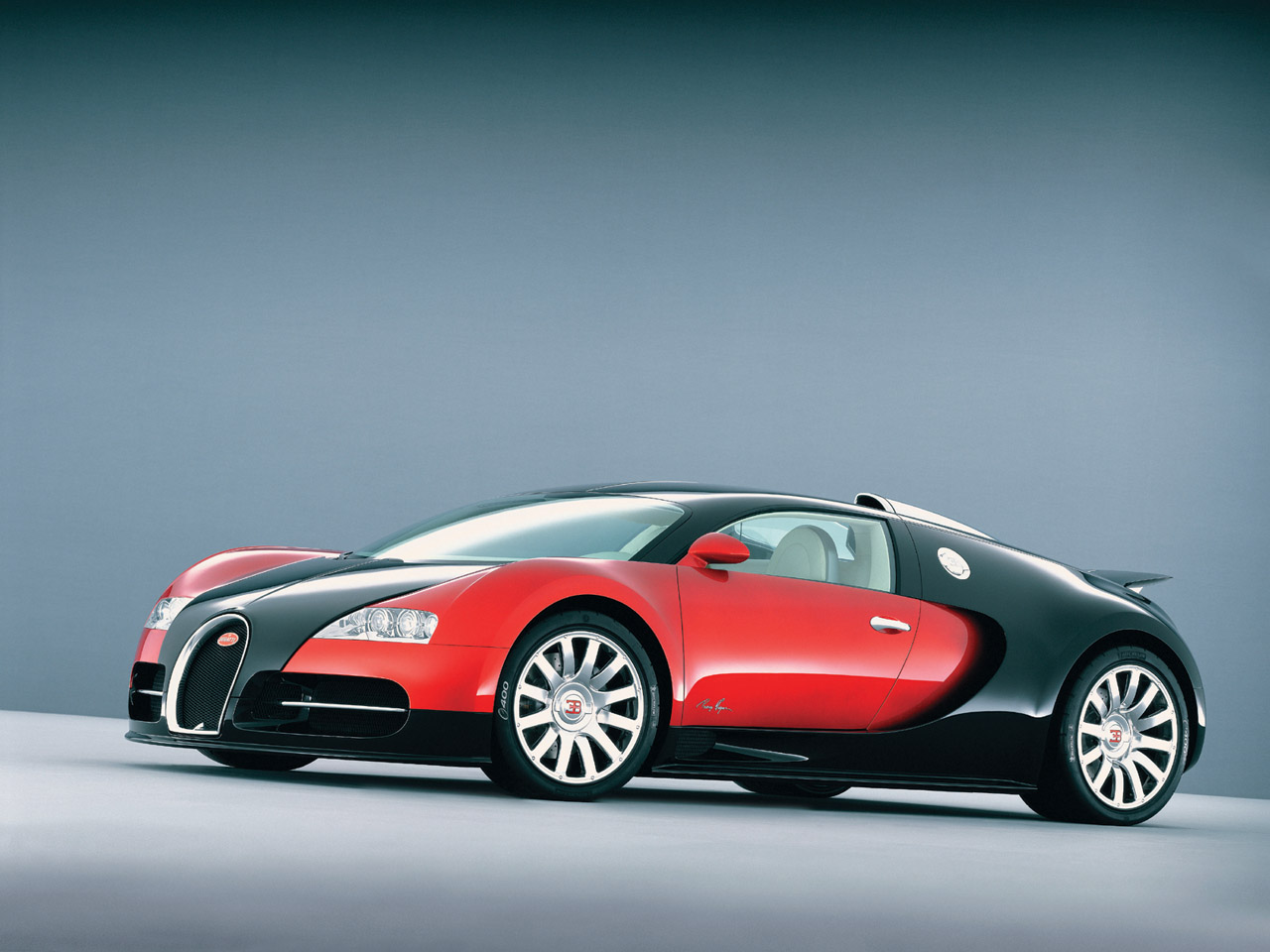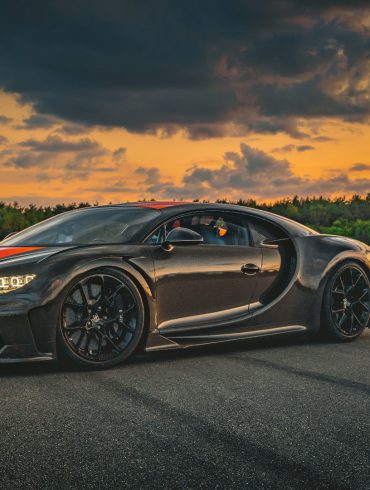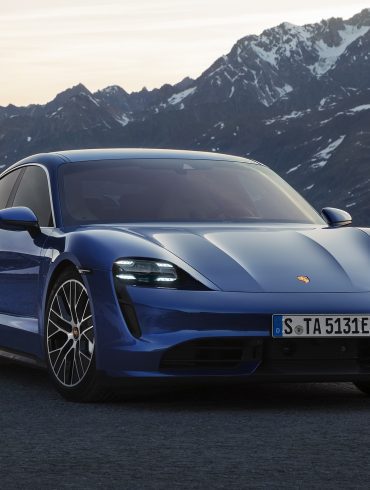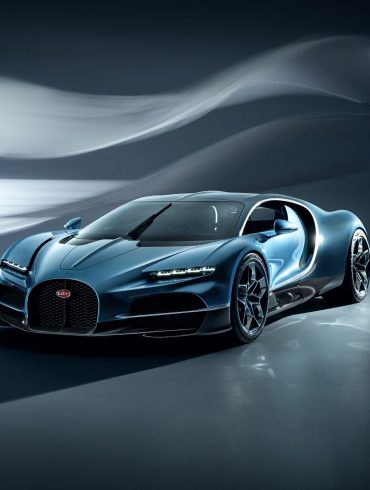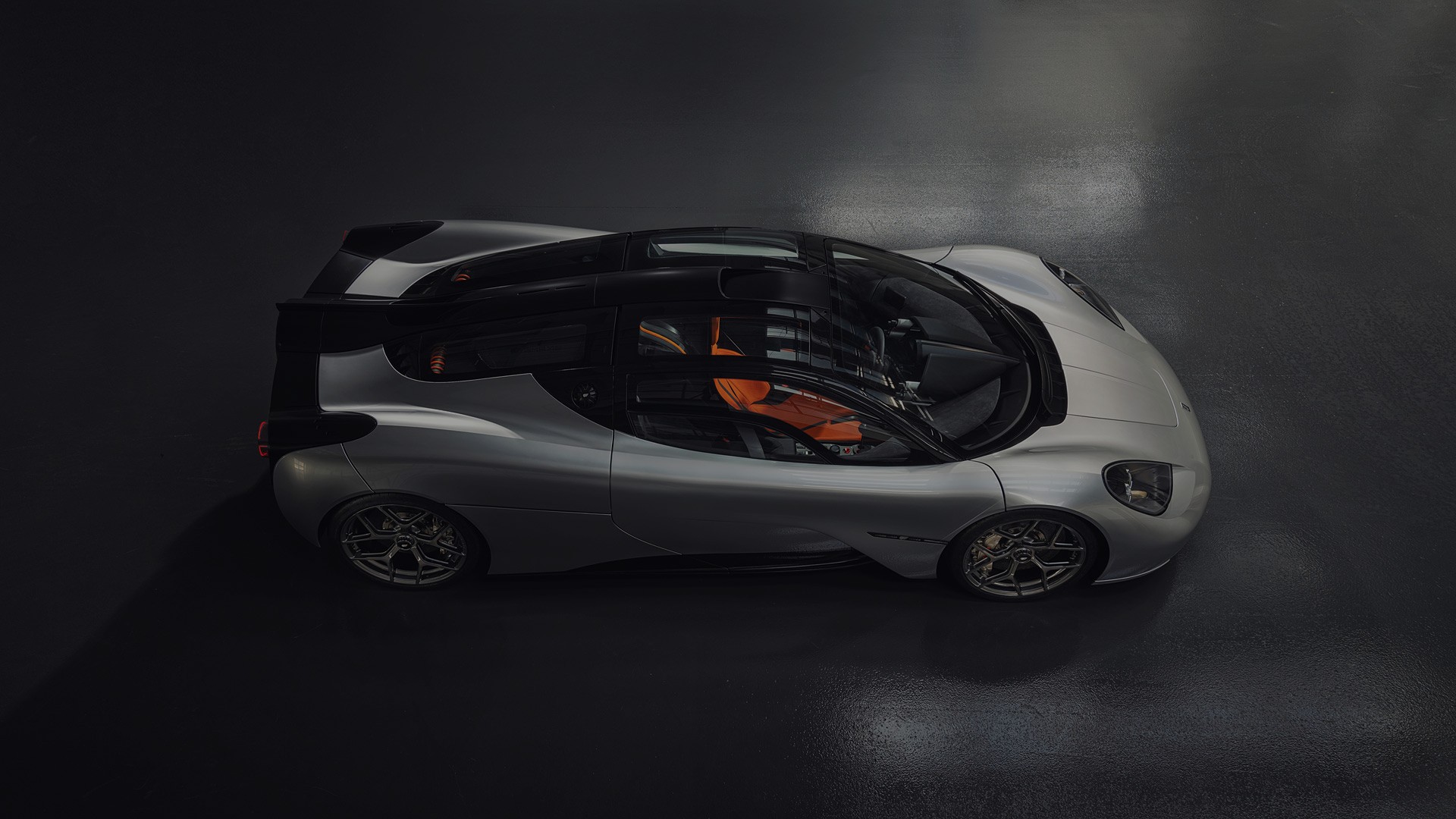2000s 0-60 & Quarter Mile Times
2000s Automotive Acceleration & Performance Data
Welcome to the ultimate guide to 0-60 mph and quarter mile times for 2000s cars! This page is your go-to resource for the most accurate, comprehensive, and easily accessible performance statistics of classic vehicles from the 2000s. Whether you're a supercar fan, or simply fascinated by this awesome era, our meticulously curated database offers unparalleled insights into the acceleration and speed of these timeless machines. Explore the remarkable performance of 2000s cars.
2000s Acceleration (0-60 mph & Quarter Mile Times)
2000s 0-60 mph and quarter-mile acceleration times. Narrow down your search via the filters.
You are trying to load a table of an unknown type. Probably you did not activate the addon which is required to use this table type.
The Fifteen Fastest Cars of the 2000s
The Quickest Cars of the 2000s Ranked
The 2000s were a transformative decade for the automotive industry, characterized by significant advancements in engine technology, an increased focus on performance, and the emergence of iconic exotic supercars. This era saw a blend of traditional internal combustion engines with cutting-edge innovations, resulting in vehicles that were more powerful, efficient, and refined than ever before.
In the United States, Chevrolet, Ford, and Tesla were at the forefront of this transformation. Chevrolet introduced the C6 Corvette in 2005, featuring a refined LS2 V8 engine with improved power and efficiency. The high-performance Z06 and ZR1 variants solidified the Corvette's status as a world-class sports car. Ford revitalized its Mustang lineup, culminating in the release of the high-performance Shelby GT500, which showcased the potential of the modular V8 engine and advanced engineering. The decade also saw the birth of Tesla, which revolutionized the automotive industry with the introduction of the Roadster in 2008. This all-electric sports car proved that electric vehicles could deliver impressive performance and range, setting the stage for the electric vehicle revolution.
European manufacturers like Ferrari, Aston Martin, Pagani, and Koenigsegg continued to push the boundaries of performance and luxury. Ferrari introduced some of its most iconic models during this decade, including the Enzo, named after the company's founder. The Enzo featured a V12 engine and advanced aerodynamics, making it one of the most celebrated supercars of the decade. Aston Martin launched the DB9 and the V8 Vantage, both of which combined British elegance with powerful V12 and V8 engines, respectively. Pagani and Koenigsegg, boutique supercar manufacturers, produced some of the most extreme and technologically advanced vehicles of the decade. Pagani's Huayra, with its twin-turbo V12 engine and exquisite craftsmanship, and Koenigsegg's Agera RS, which set multiple speed records with its powerful twin-turbo V8 engine, epitomized the pinnacle of automotive engineering and performance.
Japanese manufacturers continued to balance performance and reliability, producing some of the most respected sports cars of the era. The Nissan GT-R, known as "Godzilla," received continuous updates throughout the decade, enhancing its performance and technology. Toyota reintroduced the Supra, and Honda continued to refine the NSX, ensuring that Japanese sports cars remained competitive on the global stage.
The 2000s also saw significant advancements in engine technology and materials. The widespread adoption of turbocharging and direct fuel injection improved both performance and fuel efficiency. Lightweight materials such as carbon fiber and aluminum were increasingly used to enhance performance and reduce emissions. Additionally, the integration of electronic systems for engine management, stability control, and driver assistance began to shape the future of automotive technology.
Overall, the 2000s were a decade of remarkable progress and innovation in the automotive industry. American brands like Chevrolet and Ford reaffirmed their positions in the performance market, while Tesla laid the groundwork for the electric vehicle revolution. European manufacturers like Ferrari, Aston Martin, Pagani, and Koenigsegg continued to set standards for luxury and speed, while Japanese brands maintained their reputation for reliability and performance. The era's exotic supercars, exemplified by the Enzo Ferrari, Pagani Zonda, and Koenigsegg Agera RS, remain benchmarks for performance and design, making the 2000s a truly exceptional period in automotive history.
1. 2007 Bugatti Veyron EB 16.4
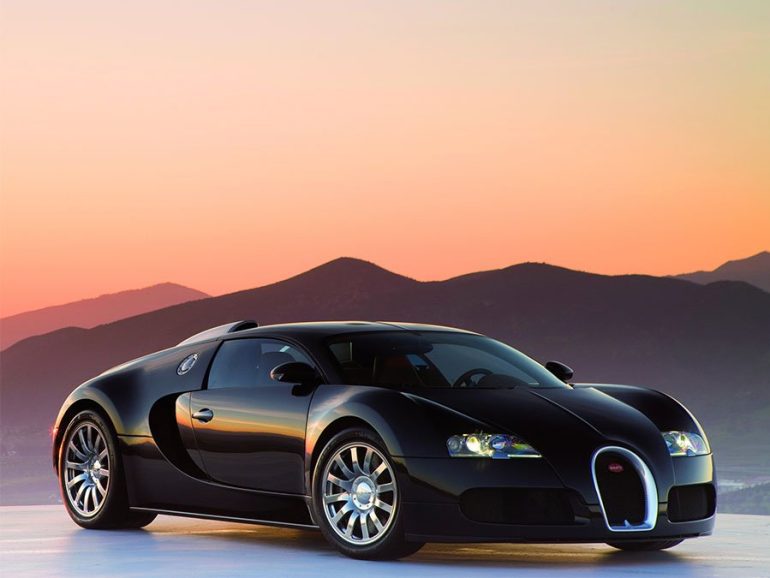
0 - 60: 2.4 seconds / Quarter Mile: 10.1 seconds
Summary
The 2007 Bugatti Veyron EB 16.4 is an automotive legend that redefined the concept of a hypercar. Unveiled in 2005, the Veyron EB 16.4 stunned the world with its unprecedented performance and luxurious features, becoming an instant icon and a benchmark for all hypercars that followed.
Underneath its sleek and aerodynamic exterior, the Veyron housed a quad-turbocharged 8.0-liter W16 engine, a masterpiece of engineering that produced a mind-boggling 1,001 horsepower and 922 lb-ft of torque. This immense power, coupled with a seven-speed dual-clutch automatic transmission and an all-wheel-drive system, propelled the Veyron from 0 to 60 mph in a rapid 2.4 seconds. It could reach an electronically limited top speed of 253 mph, making it the fastest production car in the world at the time of its release.
The Veyron EB 16.4 wasn't just about raw power; it was a technological tour de force. Its carbon fiber monocoque chassis, active aerodynamics, and complex cooling system all contributed to its exceptional handling, stability, and performance. The car's luxurious interior, with its handcrafted leather seats and premium materials, provided a comfortable and refined environment for driver and passenger. The Veyron was a testament to Bugatti's unwavering commitment to pushing the boundaries of automotive engineering and design, a car that could deliver exhilarating performance while still being comfortable and luxurious enough for everyday use.
2. 2007 SSC Ultimate Aero TT
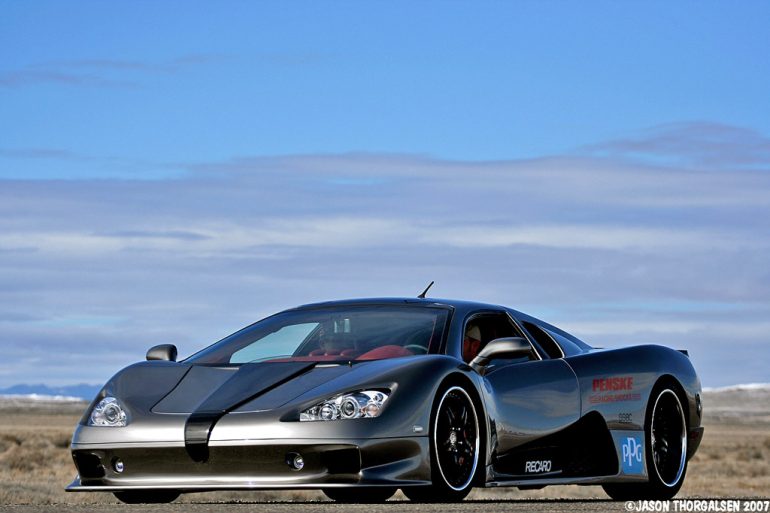
0 - 60: 2.7 seconds / Quarter Mile: 9.9 seconds
Summary
The 2007 SSC Ultimate Aero TT was a groundbreaking American hypercar that made history by claiming the title of the world's fastest production car. Developed by Shelby SuperCars (SSC), this remarkable machine was a testament to American engineering and a worthy challenger to established European supercar manufacturers.
Underneath its aerodynamically sculpted body, the Ultimate Aero TT housed a twin-turbocharged 6.3-liter V8 engine, a powerhouse that generated an astonishing 1,183 horsepower and 1,094 lb-ft of torque. This immense power, channeled through a six-speed manual transmission, propelled the car to a staggering top speed of 256.18 mph (412.28 km/h), as verified by Guinness World Records in 2007. It could sprint from 0 to 60 mph in a mere 2.7 seconds, showcasing its brutal acceleration.
The Ultimate Aero TT's performance wasn't just about raw power; it was a well-engineered machine designed to handle its immense speed. Its carbon fiber bodywork, lightweight construction, and aerodynamic design all contributed to its exceptional performance. The car's suspension and braking systems were also upgraded to cope with the high speeds it could achieve.
Despite its record-breaking performance, the Ultimate Aero TT wasn't without its quirks. Its interior was spartan, and its handling could be challenging at the limit. However, its raw power and speed, combined with its exclusivity, made it a desirable and sought-after hypercar for enthusiasts who craved the ultimate in performance.
3. 2006 Ascari A10
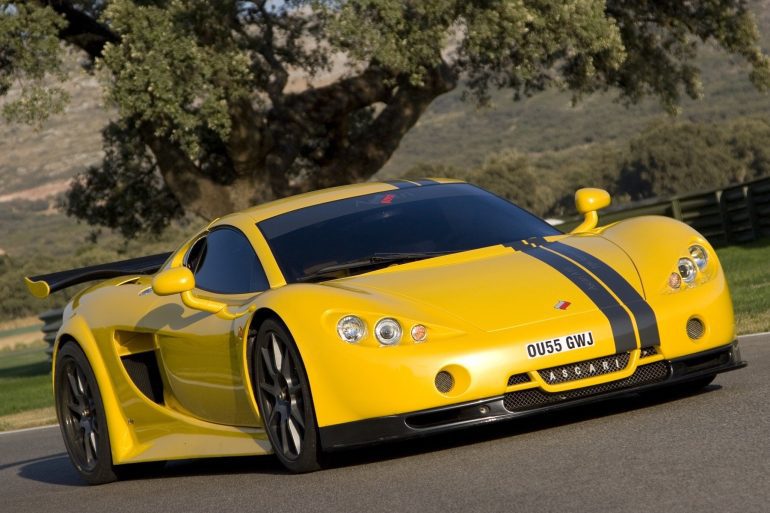
0 - 60: 2.8 seconds / Quarter Mile: 11.1 seconds
Summary
The 2006 Ascari A10 was a limited-edition supercar that showcased the British manufacturer's dedication to performance and engineering excellence. Built to commemorate Ascari's 10th anniversary, the A10 was a track-focused machine that promised exhilarating performance and a raw driving experience.
Underneath its aggressive, aerodynamic bodywork, the A10 housed a modified BMW-sourced 5.0-liter V8 engine. This naturally aspirated powerhouse produced 625 horsepower, channeling that power through a six-speed manual transmission as standard, with a sequential gearbox available as an option. The A10's lightweight carbon fiber chassis and race-inspired suspension ensured exceptional handling and agility, while its powerful brakes provided impressive stopping power.
The A10 could rocket from 0 to 60 mph in just 2.8 seconds. Its top speed was reported to be 220 mph (354 km/h), making it a serious contender among the fastest production cars of its time. These figures, combined with its track-focused design and limited production run of 50 units, made the A10 a highly desirable and exclusive supercar.
Despite its impressive performance and captivating design, the A10 never reached full production due to limited demand and financial constraints. It remains, however, a testament to Ascari's commitment to pushing boundaries and creating high-performance machines that are both thrilling and exclusive. The A10's legacy lives on as a symbol of Ascari's passion for performance and a reminder of the brand's potential to create truly exceptional supercars.
4. 2008 Ariel Atom 2
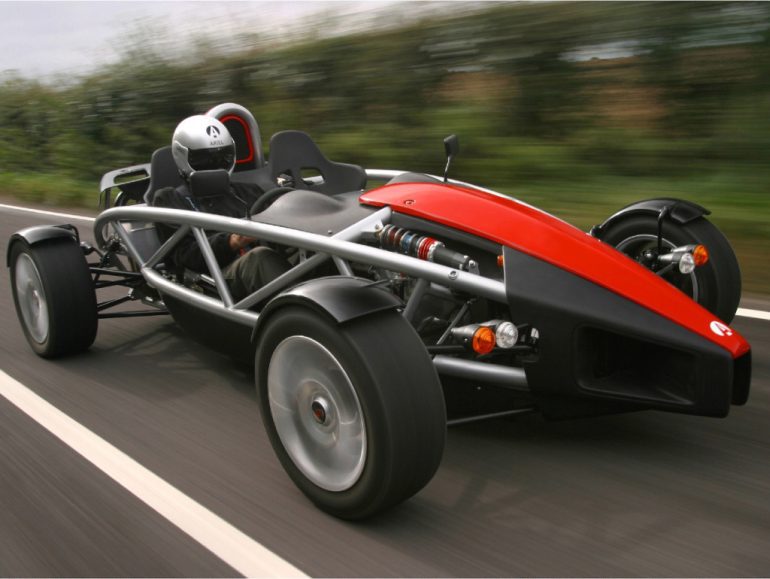
0 - 60: 2.9 seconds / Quarter Mile: 12.4 seconds
Summary
The 2008 Ariel Atom 2 is a raw, minimalist sports car that pushes the boundaries of performance and driver engagement. Its skeletal design, devoid of any unnecessary body panels or creature comforts, exposes its intricate engineering and emphasizes its focus on lightweight construction and pure driving thrills.
Underneath its exoskeletal frame, the Atom 2 could be equipped with either a naturally aspirated or supercharged 2.0-liter Honda K20 engine. The naturally aspirated version produced 245 horsepower, while the supercharged variant, known as the Atom 2 Supercharged, offered a more potent 300 horsepower and 221 lb-ft of torque. This power, combined with the car's incredibly light weight of around 500kg (1,100 lbs), resulted in a staggering power-to-weight ratio. The Atom 2 could sprint from 0 to 60 mph in an astonishing 2.9 seconds.
The Atom 2's performance wasn't just about straight-line speed. Its lightweight chassis, low center of gravity, and race-derived suspension components allowed it to change direction with lightning speed and maintain incredible grip through corners. Its unassisted steering provided direct and unfiltered feedback, giving the driver an unparalleled sense of connection with the road. The Atom 2 was a true driver's car, a machine that demanded skill and rewarded those who could master it with an adrenaline-fueled experience like no other.
While the Atom 2 may lack the creature comforts and practicality of traditional sports cars, its raw performance and unique design made it an icon in the automotive world. It was a car that prioritized driving pleasure above all else, and it delivered on that promise in spades.
5. 2009 Ariel Atom 3

0 - 60: 2.9 seconds / Quarter Mile: 11.2 seconds
Summary
The 2009 Ariel Atom 3 is a raw and exhilarating track-focused car that delivers a visceral driving experience unlike any other. Its open-wheel design and minimalist approach to construction make it a lightweight and agile machine, capable of astonishing performance on the circuit.
Underneath its exoskeletal frame, the Atom 3 houses a 2.0-liter Honda K20A i-VTEC engine. In its naturally aspirated form, it produced a respectable 245 horsepower and 166 lb-ft of torque. However, the real star of the show was the supercharged version, which boosted power to 300 horsepower and 190 lb-ft of torque. This power, combined with the car's featherlight weight of around 1,350 pounds, resulted in a breathtaking 0-60 mph time of just 2.9 seconds.
But the Atom 3's performance wasn't just about straight-line speed. Its lightweight chassis, low center of gravity, and race-derived suspension components allowed it to change direction with lightning speed and maintain incredible grip through corners. Its unassisted steering provided direct and unfiltered feedback, giving the driver an unparalleled sense of connection with the road. The Atom 3 was a true driver's car, a machine that demanded skill and rewarded those who could master it with an adrenaline-fueled experience like no other.
While the Atom 3 may have lacked the creature comforts and practicality of traditional sports cars, its raw performance and unique design made it an icon in the automotive world. It was a car that prioritized driving pleasure above all else, and it delivered on that promise in spades.
6. 2006 Koenigsegg CCX
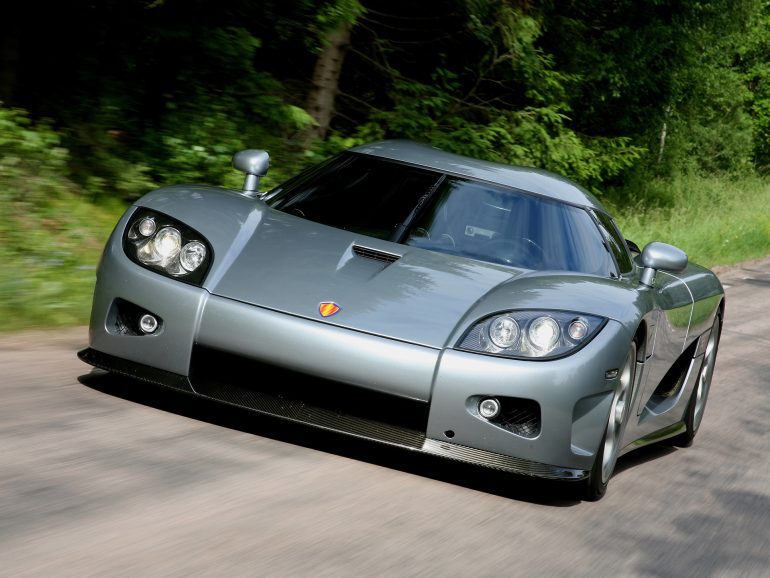
0 - 60: 3.0 seconds / Quarter Mile: 9.9 seconds
Summary
The 2006 Koenigsegg CCX was a Swedish hypercar that marked a significant step forward for the boutique manufacturer. It was designed to meet US regulations and broaden the brand's appeal, while still maintaining the incredible performance that Koenigsegg was known for.
Under the hood, the CCX housed a twin-supercharged 4.7-liter V8 engine developed in-house by Koenigsegg. This powerhouse produced 806 horsepower and 679 lb-ft of torque, enabling the CCX to accelerate from 0 to 60 mph in 3.0 seconds. Its top speed was electronically limited to 245 mph, but it was believed to be capable of even greater velocities.
The CCX wasn't just about raw power; it also boasted impressive handling capabilities thanks to its lightweight carbon fiber chassis, double wishbone suspension, and adjustable ride height. Its aerodynamic design, with a large rear wing and front splitter, helped to keep the car planted at high speeds. Inside, the CCX offered a luxurious and driver-focused cabin with leather upholstery, a premium sound system, and a removable targa top for open-air driving.
7. 2004 Koenigsegg CCR
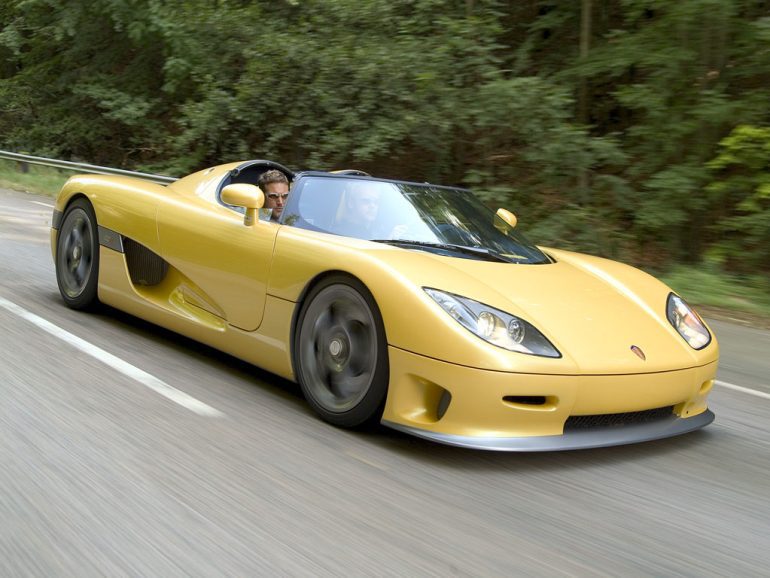
0 - 60: 3.1 seconds / Quarter Mile: 9.9 seconds
Summary
The 2004 Koenigsegg CCR is a legendary hypercar that left an enduring mark on the automotive world with its groundbreaking performance and innovative engineering. Hailing from Sweden, this exclusive machine showcased the brand's unwavering commitment to pushing the boundaries of speed and technology.
Beneath its aerodynamically sculpted body, the CCR housed a 4.7-liter V8 engine equipped with a centrifugal supercharger. This powerplant, a testament to Koenigsegg's engineering prowess, produced a staggering 806 horsepower and 679 lb-ft of torque. With this immense power, the CCR could rocket from 0 to 60 mph in a mind-boggling 3.1 seconds, and it had a claimed top speed of over 245 mph.
In February 2005, the CCR etched its name in the record books by achieving a top speed of 241.01 mph (387.87 km/h) at the Nardò Ring in Italy, setting a new Guinness World Record for the fastest production car at that time. This feat solidified Koenigsegg's reputation as a builder of world-class hypercars and showcased the brand's unwavering commitment to pushing the limits of performance.
The CCR's performance wasn't just about raw power; it was a testament to Koenigsegg's engineering ingenuity. Its carbon fiber monocoque chassis, lightweight construction, and active aerodynamics all contributed to its exceptional handling and stability at high speeds. The car's advanced suspension system and powerful brakes ensured it could handle the immense forces generated by its extraordinary performance. The 2004 Koenigsegg CCR is a true icon in the automotive world, a car that redefined the limits of what a production car could achieve and set a new standard for hypercar performance.
8. 2005 Saleen S7 Twin Turbo
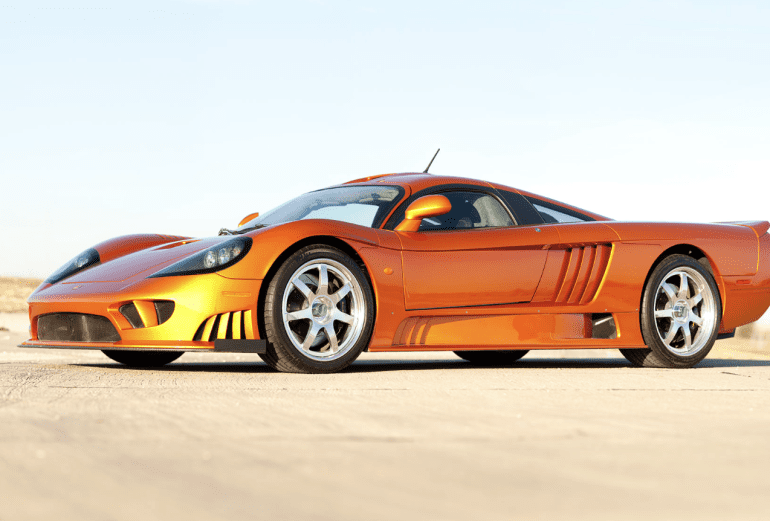
0 - 60: 3.1 seconds / Quarter Mile: 10.6 seconds
Summary
The 2005 Saleen S7 Twin Turbo is an American supercar that etched its name in automotive history with its exceptional performance and aggressive styling. Built by Saleen Automotive, a company known for its high-performance Mustangs, the S7 Twin Turbo was a true testament to American engineering and a worthy competitor to established European supercars.
Underneath its aerodynamically sculpted bodywork, the S7 Twin Turbo housed a twin-turbocharged 7.0-liter V8 engine, a powerhouse that generated an astonishing 750 horsepower and 700 lb-ft of torque. This immense power, channeled through a six-speed manual transmission, propelled the S7 Twin Turbo from 0 to 60 mph in a blistering 3.1 seconds. Its top speed was an incredible 248 mph (399 km/h), making it one of the fastest production cars in the world at the time of its release.
The S7 Twin Turbo's performance wasn't just about raw power; it was a meticulously engineered machine designed to handle its immense speed. Its lightweight spaceframe chassis, double wishbone suspension, and massive Brembo brakes provided exceptional handling and stopping power. The car's active rear wing and adjustable suspension allowed for optimal downforce and grip, ensuring stability and confidence at high speeds.
The 2005 Saleen S7 Twin Turbo was a game-changer in the American supercar scene, proving that domestic manufacturers could build world-class performance machines that could rival the best that Europe had to offer. Its legacy lives on as a symbol of American ingenuity and a testament to the raw power of a twin-turbocharged V8 engine.
9. 2003 Ferrari Enzo
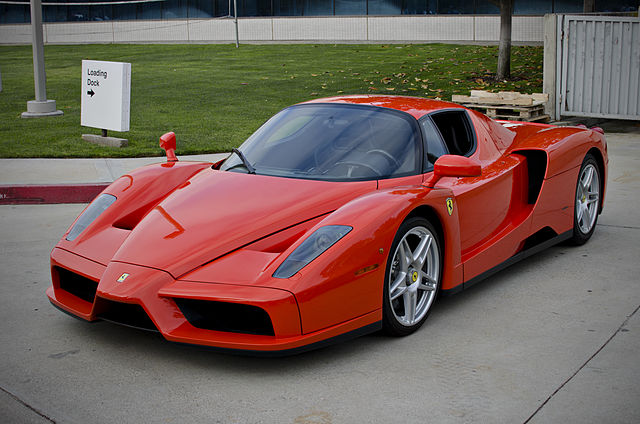
0 - 60: 3.2 seconds / Quarter Mile: 11.0 seconds
Summary
The 2003 Ferrari Enzo, named after the company's founder, is an iconic hypercar that stands as a symbol of automotive excellence and engineering prowess. Its striking design, reminiscent of Formula One cars, was not only visually stunning but also aerodynamically efficient, a testament to the car's racing pedigree.
Underneath its sculpted bodywork, the Enzo housed a 6.0-liter naturally aspirated V12 engine, a masterpiece of engineering that produced a staggering 651 horsepower and 485 lb-ft of torque. This powerful engine, paired with a lightning-fast six-speed automated manual transmission with paddle shifters, propelled the Enzo from 0 to 60 mph in just 3.2 seconds. Its top speed of 218 mph made it one of the fastest production cars in the world at the time of its release.
But the Enzo's performance wasn't just about raw power. It was a meticulously engineered machine designed to deliver an unparalleled driving experience. Its carbon-fiber monocoque chassis, active aerodynamics, and carbon-ceramic brakes all contributed to its exceptional handling and braking performance. The car's sophisticated traction control and stability control systems furth
10. 2007 Noble M400
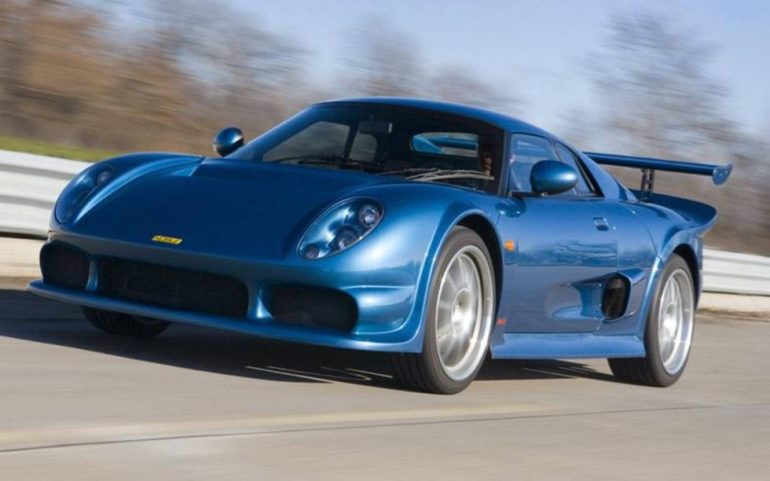
0 - 60: 3.2 seconds / Quarter Mile: 11.4 seconds
Summary
The 2007 Noble M400 is a British supercar that prioritized pure driving thrills over luxury and comfort, offering performance that rivaled much more expensive exotics. Its lightweight design and powerful engine made it a formidable machine both on the road and track.
Beneath its unassuming yet aerodynamic bodywork, the M400 was powered by a twin-turbocharged 3.0-liter Ford Duratec V6 engine. Tuned to perfection, this powerplant unleashed a ferocious 425 horsepower and 390 lb-ft of torque. Thanks to its featherlight curb weight of just 1,134 kg (2,500 lbs), the M400 could rocket from 0 to 60 mph in 3.2 seconds, with a top speed of 185 mph.
But the M400 wasn't just about straight-line speed. Its mid-engine layout, race-derived suspension, and sticky tires delivered exceptional handling and agility, making it a joy to drive on winding roads. The car's direct steering and communicative chassis provided drivers with an unparalleled sense of connection and control, allowing them to push the M400 to its limits with confidence.
11. 2009 Lamborghini Murciélago LP 670-4 SV
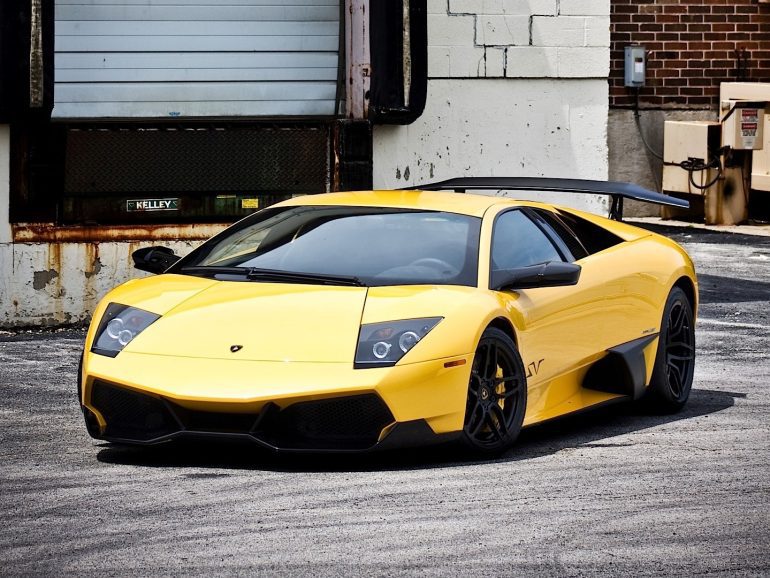
0 - 60: 3.2 seconds / Quarter Mile: 11.0 seconds
Summary
The 2009 Lamborghini Murciélago LP 670-4 SV, short for SuperVeloce, was a track-focused iteration of the iconic Murciélago supercar, designed to deliver an even more intense and exhilarating driving experience. It was the pinnacle of the Murciélago's evolution, boasting enhanced performance, a more aggressive design, and a lighter weight than its predecessors.
At the heart of the LP 670-4 SV was a naturally aspirated 6.5-liter V12 engine that produced a staggering 670 horsepower and 487 lb-ft of torque. This powerful engine, combined with a six-speed automated manual transmission and all-wheel drive, propelled the car from 0 to 60 mph in just 3.2 seconds, with a top speed of 212 mph. Its acceleration was brutal, and its exhaust note was a symphony of power and aggression.
The LP 670-4 SV's performance wasn't just about straight-line speed. It also featured a revised suspension, larger brakes, and a more aerodynamic body kit, all of which contributed to its improved handling and grip on the track. The car's lightweight construction, achieved through the use of carbon fiber and other exotic materials, further enhanced its agility and responsiveness. Inside, the LP 670-4 SV's interior was a spartan yet luxurious environment, with Alcantara upholstery, carbon fiber trim, and a driver-focused cockpit that emphasized the car's performance-oriented nature.
12. 2009 Nissan GT-R
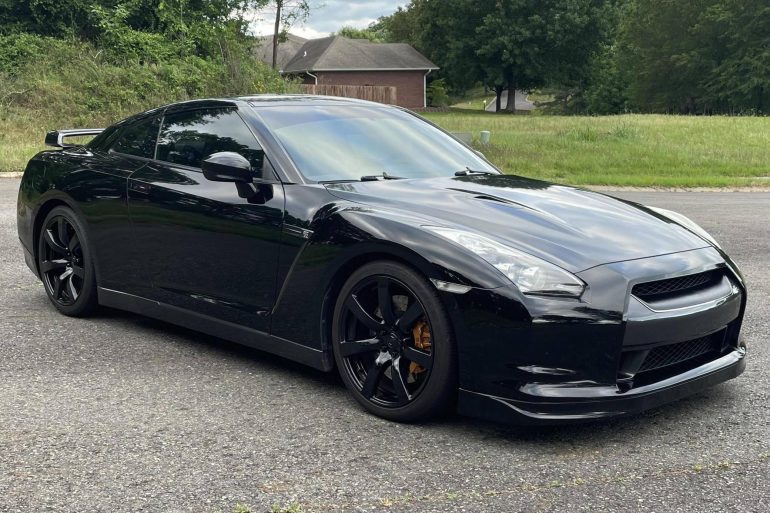
0 - 60: 3.2 seconds / Quarter Mile: 11.5 seconds
Summary
The 2009 Nissan GT-R was a game-changer, a supercar-slaying machine that redefined performance expectations for Japanese sports cars. With its cutting-edge technology, all-wheel drive grip, and ferocious acceleration, the GT-R quickly became a legend in the automotive world.
Under the hood, the GT-R packed a twin-turbocharged 3.8-liter V6 engine, hand-assembled by a single technician. This powerhouse produced 480 horsepower and 430 lb-ft of torque, propelling the GT-R from 0 to 60 mph in just 3.2 seconds, a figure that rivaled (and often beat) some of the most expensive exotics on the market. It could also conquer the quarter-mile in 11.5 seconds, showcasing its impressive straight-line performance.
But the GT-R wasn't just about brute force. It also boasted a sophisticated all-wheel-drive system, a quick-shifting dual-clutch transmission, and advanced launch control, all of which contributed to its incredible launch and track capabilities. Its sophisticated suspension and braking system ensured it could handle corners with precision and stability, making it a true driver's car. The GT-R's performance credentials were further cemented by its numerous victories in various motorsport events, including time attack competitions and endurance races.
13. 2005 Lamborghini Murciélago 40th Anniv.
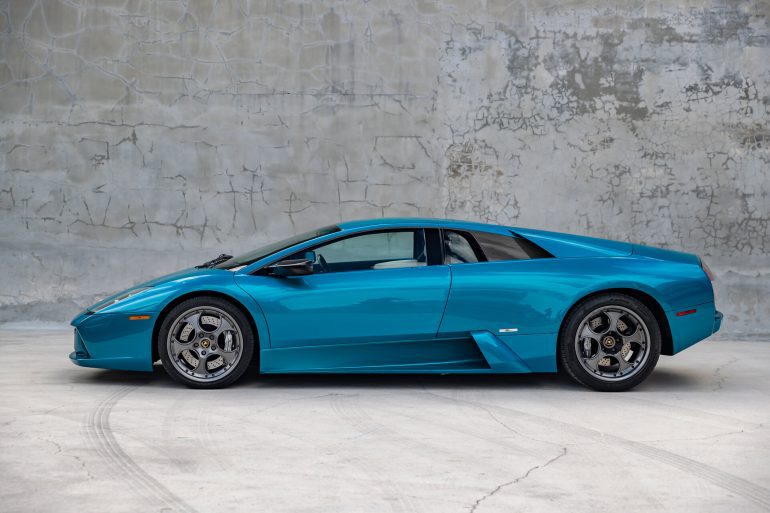
0 - 60: 3.3 seconds / Quarter Mile: 11.7 seconds
Summary
The 2005 Lamborghini Murciélago 40th Anniversario was a special edition created to celebrate Lamborghini's 40th anniversary. Limited to just 50 units worldwide, this exclusive model was a tribute to the brand's heritage and a showcase of its design and engineering prowess.
Underneath its distinctive Verde Artemis (Jade Green) bodywork, the 40th Anniversario housed a naturally aspirated 6.2-liter V12 engine, a powerhouse that produced 580 horsepower and 487 lb-ft of torque. This engine, paired with a six-speed manual transmission, propelled the car from 0 to 60 mph in a blistering 3.2 seconds. Its top speed was an impressive 205 mph, making it one of the fastest production cars of its time.
The 40th Anniversario's performance wasn't just about straight-line speed. It also featured a revised suspension, carbon ceramic brakes, and an improved aerodynamic package, all of which contributed to its exceptional handling and braking capabilities. The car's limited-slip differential and all-wheel-drive system provided excellent traction and grip, allowing it to conquer corners with confidence and precision.
The interior of the 40th Anniversario was a luxurious and exclusive environment, featuring a unique Grigio Syrus (grey) leather upholstery with contrasting stitching, carbon fiber accents, and a numbered plaque commemorating its limited production run. The car's advanced technology, including a satellite navigation system and a premium audio system, further enhanced its appeal as a luxury supercar.
14. 2006 Pagani Zonda F Roadster
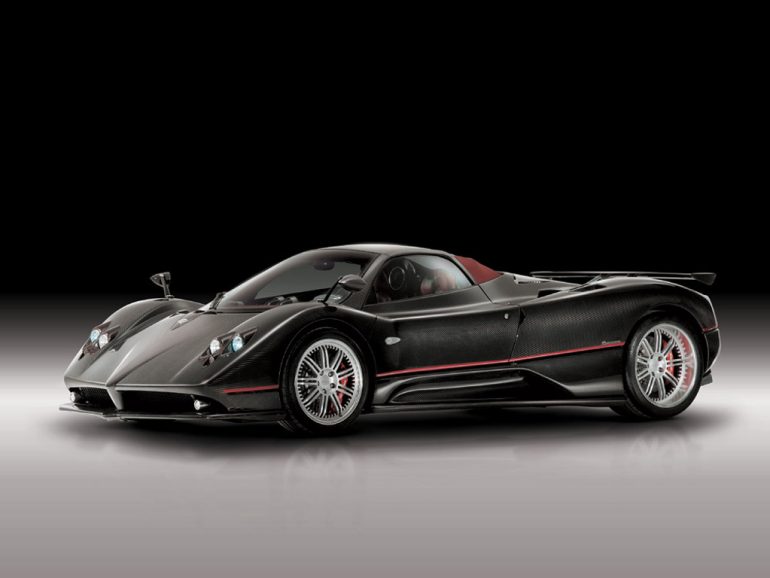
0 - 60: 3.3 seconds / Quarter Mile: N/A seconds
Summary
The 2006 Pagani Zonda F Roadster is a masterpiece of automotive art and engineering, a convertible hypercar that delivers both breathtaking performance and exquisite open-air thrills. Limited to just 25 examples, this exclusive model is a testament to Pagani's commitment to bespoke craftsmanship and the pursuit of automotive perfection.
Beneath its sculpted carbon fiber body, the Zonda F Roadster houses a naturally aspirated 7.3-liter AMG V12 engine, a powerhouse that produces 650 horsepower and 575 lb-ft of torque. This monstrous engine, paired with a six-speed manual transmission, propels the car from 0 to 66 mph in just 3.3 seconds. While its top speed hasn't been officially tested, it's estimated to be well over 200 mph.
The Zonda F Roadster's performance isn't just about raw power; it's also about the purity of the driving experience. The open-top design, with its removable carbon fiber roof, allows drivers to fully immerse themselves in the symphony of the V12 engine and the thrill of high-speed driving. Its lightweight construction, race-derived suspension, and aerodynamic enhancements make it incredibly agile and responsive, while its carbon ceramic brakes provide exceptional stopping power. The Zonda F Roadster is a rare and highly sought-after collector's item, a testament to Pagani's dedication to creating unique and exhilarating automotive experiences.
15. 2008 Ferrari F430 Scuderia
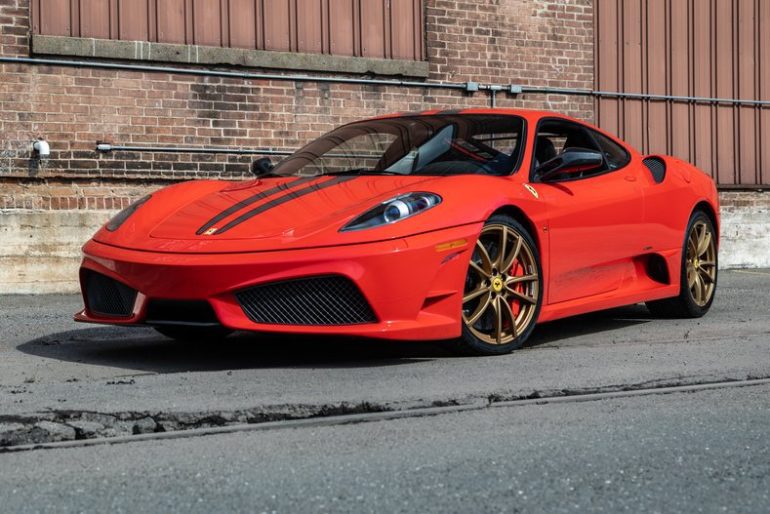
0 - 60: 3.3 seconds / Quarter Mile: 11.4 seconds
Summary
The 2008 Ferrari F430 Scuderia is a track-focused iteration of the already impressive F430, a supercar designed for pure driving thrills. Developed with input from Formula 1 legend Michael Schumacher, the Scuderia takes the F430's performance to new heights, boasting a more powerful engine, a lighter weight, and enhanced handling.
Under its hood, the Scuderia features a tuned version of the F430's 4.3-liter V8 engine, now producing 503 horsepower and 347 lb-ft of torque. This power is sent to the rear wheels through a six-speed automated manual transmission with paddle shifters, allowing for lightning-fast gear changes and blistering acceleration. The Scuderia can sprint from 0 to 60 mph in a mere 3.3 seconds, with a top speed of 198 mph.
The Scuderia's performance isn't just about straight-line speed. It also features a revised suspension with stiffer springs and dampers, a modified traction control system, and sticky Michelin Pilot Sport Cup 2 tires, all of which contribute to its exceptional handling and agility. The car's electronic differential and carbon-ceramic brakes further enhance its performance, providing precise control and incredible stopping power.
Inside the cabin, the Scuderia is stripped down and focused, with lightweight racing seats, Alcantara upholstery, and carbon fiber trim. The car's minimalist design and emphasis on functionality create a driver-focused environment that is both purposeful and exhilarating. While the Scuderia may not be the most comfortable car for everyday use, its raw performance and track-ready capabilities make it a dream machine for enthusiasts who crave the ultimate in driving t


